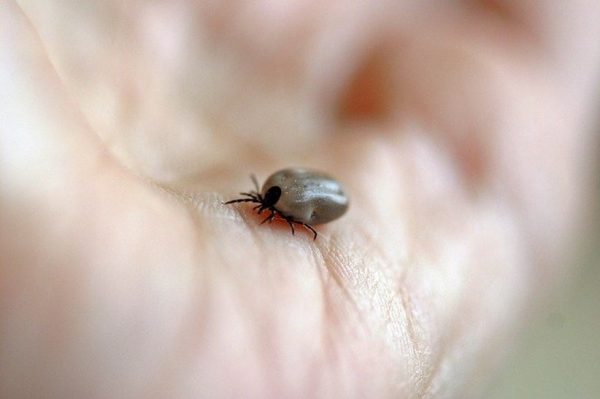
Tips to Control Ticks and Lyme disease
As the summer is approaching, people like to spend their time outside in hiking, grass mowing, picnicking in woods or in parks. This time of the year is known for tick bites and lyme disease. Lyme disease is caused by the bacterium Borrelia burgdorferi and is transmitted to humans through the bite of infected blacklegged ticks.
In 1977 two Yale school of Medicine scientists identified the infected blacklegged deer tick carrying the Lyme causing bacterium. Since then this is a most commonly reported vector-borne disease in US. According to reports approximately 300,000 cases are diagnosed annually in US alone.
Symptoms: Typical symptoms of Lyme disease include fever, headache, fatigue, and a characteristic skin rash called erythema migrans. If left untreated, infection can spread to joints, the heart, and the nervous system. The weaker or more compromised is the immune system, the more likely a debilitating course of illness will occur. Untreated Lyme disease can produce a wide range of symptoms, depending on the stage of infection. These include fever, rash, facial paralysis, and arthritis. Seek medical attention if you observe any of these symptoms and have had a tick bite, live in an area known for Lyme disease, or have recently traveled to an area where Lyme disease occurs (Ref: CDC).
Early Signs and Symptoms (3 to 30 days after tick bite)
• Fever, chills, headache, fatigue, muscle and joint aches, and swollen lymph nodes
Erythema migrans (EM) rash:
• Occurs in approximately 70 to 80 percent of infected persons
• Begins at the site of a tick bite after a delay of 3 to 30 days (average is about 7 days)
• Expands gradually over a period of days reaching up to 12 inches or more (30 cm) across
• May feel warm to the touch but is rarely itchy or painful
• Sometimes clears as it enlarges, resulting in a target or “bull’s-eye” appearance
• May appear on any area of the body.
According to Stephen Harrod Buhner, who is a scholar and author of Healing Lyme Disease Co-infections “the bacteria have jumped species and found new hosts that live in habitats formerly occupied by wild animals. They have learned to exist in humans and are teaching each other how to resist antibiotics and more easily infect us. What they do together in the body is a great deal more complex than what they do alone and making them difficult to treat “. This bacteria uses existing inflammation in the body, such as arthritis and grows further.
Is there a vaccine for lyme disease? According to CDC “A Lyme disease vaccine is no longer available. The vaccine manufacturer discontinued production in 2002, citing insufficient consumer demand. Protection provided by this vaccine diminishes over time. Therefore, if you received the Lyme disease vaccine before 2002, you are probably no longer protected against Lyme disease (CDC)
Tips to control ticks:
1) Dressing: Ticks in high vegetation areas wait for a passing host. To avoid these hitchhikers must wear light colored long pants tucked into socks. A shirt should also be tucked in. After hiking strip down and search hair, under arms, legs, behind ears and knees, belly button for the hiding tick. Apply topical repellent preferably therapeutic grade essential oils on the body.
2) Neem oil: According to The National Pesticide information center neem oil is a naturally occurring pesticide that helps in repelling these insects. Oil extract from neem seed is good for this purpose. It has been used for hundreds of years to control pests and disease. The active compound Azadirachtin is responsible for this action.- it interferes with insect hormone system and make it harder for insects to grow and lay eggs.
3) Essential oil: To one cup of distilled water add two drops of geranium essential oil, 2 drops of Palo Santo essential oil, 1 drop of myrrh essential oil, 4 drops of grapefruit essential oil, 1 drop of peppermint oil, 1 drop of thieves hand soap or castile soap. Place all the ingredients in a spray bottle and shake. Spritz on socks, sneakers, hiking boots, ankles and legs and on minimally exposed skin before stepping into woods or tick area.
4) Aromatherapy oils: Oils of basil, lemon, cinnamon, cedar, lavender, and pennyroyal are the natural repellent for ticks. For removing ticks, prepare a mixture of any three oils. Mix one drop each of the three oils chosen and pure almond oil. Stir it well, and soak a cloth in it. This helps in repelling ticks both from humans and pets.
5) Citrus repellent – Cut a lemon into quarters and put into a pint jar. Cover with boiling water and let steep overnight. Put the solution in a spray bottle and spritz when you have to go out in woods, hiking, park where tick fear exists.
6) Apple cider vinegar: This can be a beneficial remedy for removing ticks. Making mix: Pour 8 ounce of apple cider vinegar in a bowl. Add 4 ounce of warm water in it. Stir it well adding half teaspoon each of salt and baking soda. Fill the solution in a spray bottle and shake it well before use.
7) Witch hazel mix: Witch hazel is a natural tick repellent. Mix witch hazel and lemon eucalyptus oil in 10:1 ratio, stir the solution well and fill it in a spray bottle. Spray it on your pet and on yourself to repel ticks.
8) Get Sticky. Keep a sticky tape-type lint roller handy if you are finding ticks regularly. This little gizmo will pick up unattached ticks from clothing or pets, which bring hitchhiking ticks into the house. Use any type of sticky tape to cleanly capture ticks crawling in your home.
9) For dogs : Prepare tick Shampoo – Mix several drops of Palo Santo with organic lavender shampoo. Let the suds sit on your dog for twenty minutes before rinsing. This will kill any existing ticks or prevent new ones. Apply little of rose geranium essential oil on very few spots (like shoulder blades and tail base) on your dog when going out. This repels ticks.
10) Others: Liquid dish detergent, tea tree oil, mouthwash, turpentine, garlic, cinnamon oil are also effective in repelling the ticks and some of them even kill ticks.
11) Create tick -safe zone : Clear tall grasses and brush around homes and at the edge of lawns. Mow the lawn frequently and keep leaves raked. Keep playground equipment, decks, and patios away from yard edges and trees and place them in a sunny location, if possible. Remove any old furniture, mattresses, or trash from the yard that may give ticks a place to hide.
How to Remove a Tick: (source: Provided by Ohio State University)
If a tick should become attached to you or your pet, remove it as soon as possible. Prompt removal reduces the chance of infection by Rocky Mountain spotted fever and Lyme disease.
• Shield your fingers with a paper towel, use tweezers or wear rubber gloves. Grasp the tick close to the skin, and with steady pressure, pull straight out.
• Do not twist or jerk, as mouthparts may be left in the skin. Take care not to crush or puncture the pest during removal.
• Use of a hot match or cigarette is NOT recommended as this may cause the tick to burst. Spotted fever may be acquired from infected pest body fluids that come in contact with broken skin, the mouth or eyes.
• Avoid touching with bare hands – secretions can be infectious. Spotted fever can be acquired through self-inoculation into a small scratch or cut.
• After removal, thoroughly disinfect the bite site and wash hands with soap and water.
• Ticks can be tested for disease. Contact the Vector-borne Disease Program of the Department of Health. Place in a small jar or zip-lock plastic bag, along with a few blades of green grass (to provide moisture). Store in a cool place until it can be delivered.
• Safely dispose of these pests by placing them in a container of oil or alcohol, sticking them to tape or flushing them in the toilet.
References:
- www.cdc.gov
- http://www.primallyinspired.com/
- http://www.petmd.com/
- http://homeremedyshop.com/
- http://www.historyofvaccines.org/content/articles/history-lyme-disease-vaccine.
Image credit: Image by Catkin from Pixabay (Free for commercial use)
Author: HealthyLife | Posted on: May 18, 2016
« Grandma’s Hair Care Tips Stress in Adolescents: How Adolescents can help themselves »




















2 Comments on “Tips to Control Ticks and Lyme disease”
Hi Grandma, very helpful article thanks for sharing.
from: http://www.onhomeremedies.com
Thank you Sameer. Keep visiting us 🙂
Write a comment